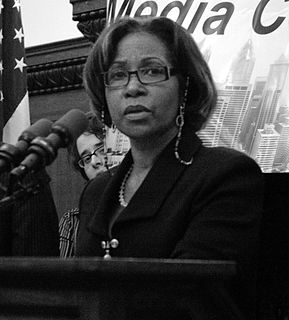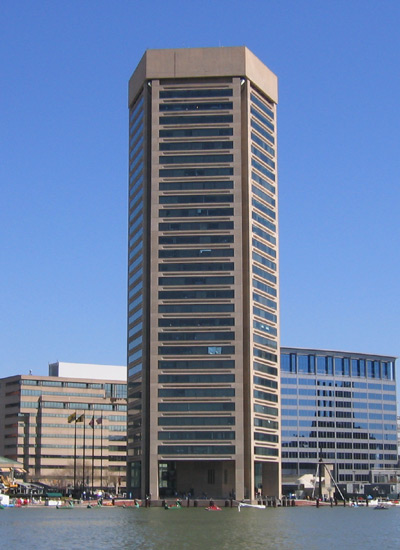
In the United States, the Department of Commerce is an executive department of the federal government concerned with promoting economic growth. Among its tasks are gathering economic and demographic data for business and government decision-making, and helping to set industrial standards. This organization's main purpose is to create jobs, promote economic growth, encourage sustainable development and block harmful trade practices of other nations. The Department of Commerce headquarters is the Herbert C. Hoover Building in Washington, D.C. Wilbur Ross is the current Commerce secretary.

The International Trade Administration (ITA) is an agency in the United States Department of Commerce that promotes United States exports of nonagricultural U.S. services and goods.

The Ministry of Economic Development, Job Creation and Trade in the Canadian province of Ontario is responsible for programs to attract and retain business and economic development in the province. This is pursued through research and development funding, business advisory services, career exploration opportunities and business startup programs for youth, skills development and marketing Ontario to potential international business investors.

The Philippine Department of Trade and Industry is the executive department of the Philippine Government tasked as the main economic catalyst that enables innovative, competitive, job generating, inclusive business, and empowers consumers. It acts as catalyst for intensified private sector activity in order to accelerate and sustain economic growth through comprehensive industrial growth strategy, progressive and socially responsible trade liberalization and deregulation programs and policymaking designed for the expansion and diversification of Philippine trade - both domestic and foreign.
The Oklahoma Department of Commerce is a department of the government of Oklahoma under the Oklahoma Secretary of Commerce. The Department is responsible for the supporting local communities, stimulating growth of the existing businesses, attracting new business, and promoting the development and availability of a skilled workforce. The Department is the lead agency for economic development in the state. The Department is led by and under the control of a Director appointed by the Governor of Oklahoma, with the approval of the Oklahoma Senate, to serve at the pleasure of the Governor.
The Vermont Agency of Commerce and Community Development is a Vermont state agency. The agency is charged with the enhancement of the Vermont business climate, the development of tourism, and strengthening Vermont communities.

Blondell Reynolds Brown is an American politician and member of the Democratic Party. She served as a member of the Philadelphia City Council.

Jennie M. Forehand is a legislator who has served 15 years in the Maryland Senate, representing Rockville, Gaithersburg, and Garrett Park. She previously served four terms in the Maryland House of Delegates.

The Georgia Department of Economic Development (GDEcD) is a department of the State of Georgia. The department plans, manages and mobilizes state resources to attract new business investment to Georgia, drive the expansion of existing industry and small business, locate new markets for Georgia products, inspire tourists to visit Georgia and promote the state as a top destination for arts events and film, music and digital entertainment projects.
Established in 1993, the Investment and Development Agency of Latvia, or LIAA for short, acts under the Ministry of Ministry of Economics of the Republic of Latvia. Since 2020, the Director of LIAA is Kaspars Rožkalns.

Maryland's leading industries by employment are health care and social assistance, state and local government, retail trade, and professional and technical services. Maryland's Gross State Product (GSP) was $295.4 billion in 2010. The Government sector produced $52.1 billion and accounted for 18 percent of Maryland's GSP in 2009. Federal government, including military and civilian, accounted for slightly more than half at just over $27 billion, while state and local government combined for nearly $25 billion. The Fort George G. Meade military installation, which includes employees of the National Security Agency, is the state's biggest employer at 44,540. The largest private sector industry is real estate with $48.4 billion, or 17 percent of economic activity. Large private employers in Maryland include Black & Decker, Legg Mason, Lockheed Martin, Marriott International, ZeniMax Media, McCormick & Company, Perdue Farms, General Motors, IBM, Northrop Grumman, and Verizon.

The American Chamber of Commerce (AmCham) is the largest foreign business organization operating in Russia. Founded in 1994, AmCham advocates the trade and investment interests of over 500 members, which include major U.S. Corporations, as well as large European and Russian companies. The Chamber advances commercial relations between the Russian Federation and the international community by promoting an investment-friendly environment. In so doing, the Chamber maintains a constant dialogue with the Russian government to protect and promote the economic interests of member companies.
The Wisconsin Department of Commerce was a department in the executive branch of the Government of Wisconsin. It was responsible for implementing and overseeing the economic development programs for Wisconsin through consultation, technical assistance, and relocation assistance. It also administered the distribution of federal economic assistance programs to local governments and businesses, and acts as a go-between for businesses and other government agencies. The department also enforced laws regarding safety and sanitation in buildings, petroleum products, and petroleum tanks. It also gave housing assistance to low income families.
The Ministry of Heritage, Sport, Tourism and Culture Industries, was created on January 18, 2010 when the Ministry of Culture and the Ministry of Tourism were combined under one ministry. Sport was added to the portfolio in 2011. It is responsible for the development of policies and programs and the operation of programs related to tourism, arts, cultural industries, heritage sectors and libraries, in Ontario. The Ministry works in partnership with its agencies, attractions, boards and commissions and the private sector to maximize the economic, cultural and social contributions of its agencies and attractions, while promoting the tourism industry and preserving Ontario's culture and heritage.

The Idaho Department of Commerce is the lead economic development organization for the State of Idaho, a state located in the Northwestern United States. The Department utilizes resources at a state level to improve the economic growth of the state. Idaho offers open door access to all levels of government. Providing public grants, tax credits, and tax exemptions are just a few of the incentives the Department of Commerce uses to entice companies to expand, relocate, or invest in Idaho through:

Ioanna Morfessis is an American business woman and an internationally recognized economic development strategist and practitioner. She has been an innovator in economic development programs and strategies since her first post in the profession, founding four economic development organizations and establishing programs and tools that became models for communities across the U.S. Morfessis is a trailblazer as a woman executive in economic development, having served as the first woman to lead economic development organizations in the markets that she served.
The Cultural Office of the Pikes Peak Region (COPPeR) is a certified nonprofit arts organization located in downtown Colorado Springs, Colorado and serving El Paso and Teller counties. In February 2014, Andy Vick replaced Christina McGrath as COPPeR's executive director. COPPeR receives funding from the city of Colorado Springs and from various grants. It acts as an umbrella artistic service, "the lead entity for centralizing and coordinating information about cultural services in the Pikes Peak region of Colorado." COPPeR conceptualizes itself as an adhesive that unifies the greater arts community to make arts and culture more dynamic and powerful than any one organization. COPPeR invites and engages residents and visitors to draw them into the local arts scene; it advocates for all of the arts; and it builds the cultural community to create a regional brand.
The Utah Office of Tourism is a government agency which aims to increase tourism to the state of Utah. This increase would provide revenue to Utah, easing the burden on taxpayers.
Enterprise Florida, Inc. (EFI) is a public–private partnership between Florida’s business and government leaders and is the principal economic development organization for the state of Florida. EFI’s mission is to expand and diversify the state’s economy through job creation. In pursuit of its mission, EFI works closely with a statewide network of economic development partners and is funded both by the State of Florida and by private-sector businesses.















